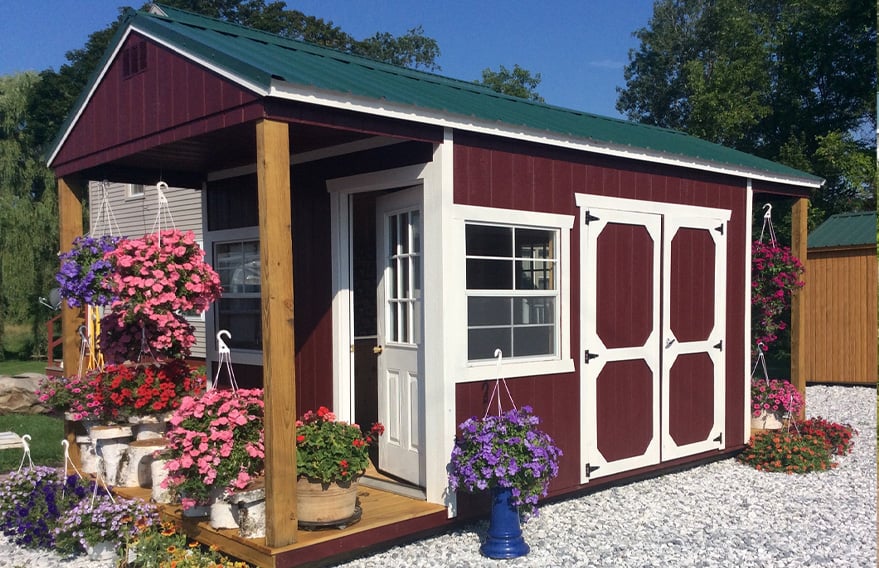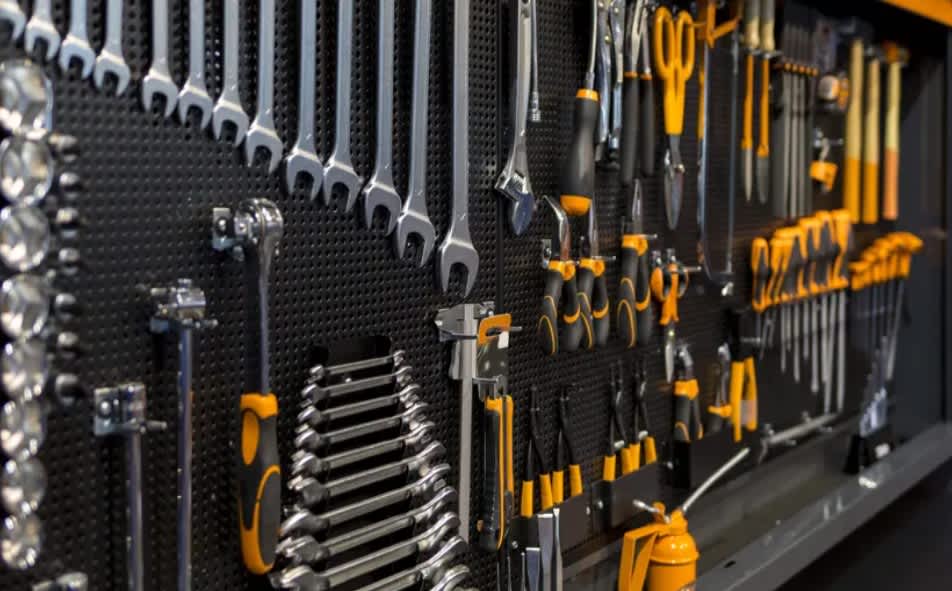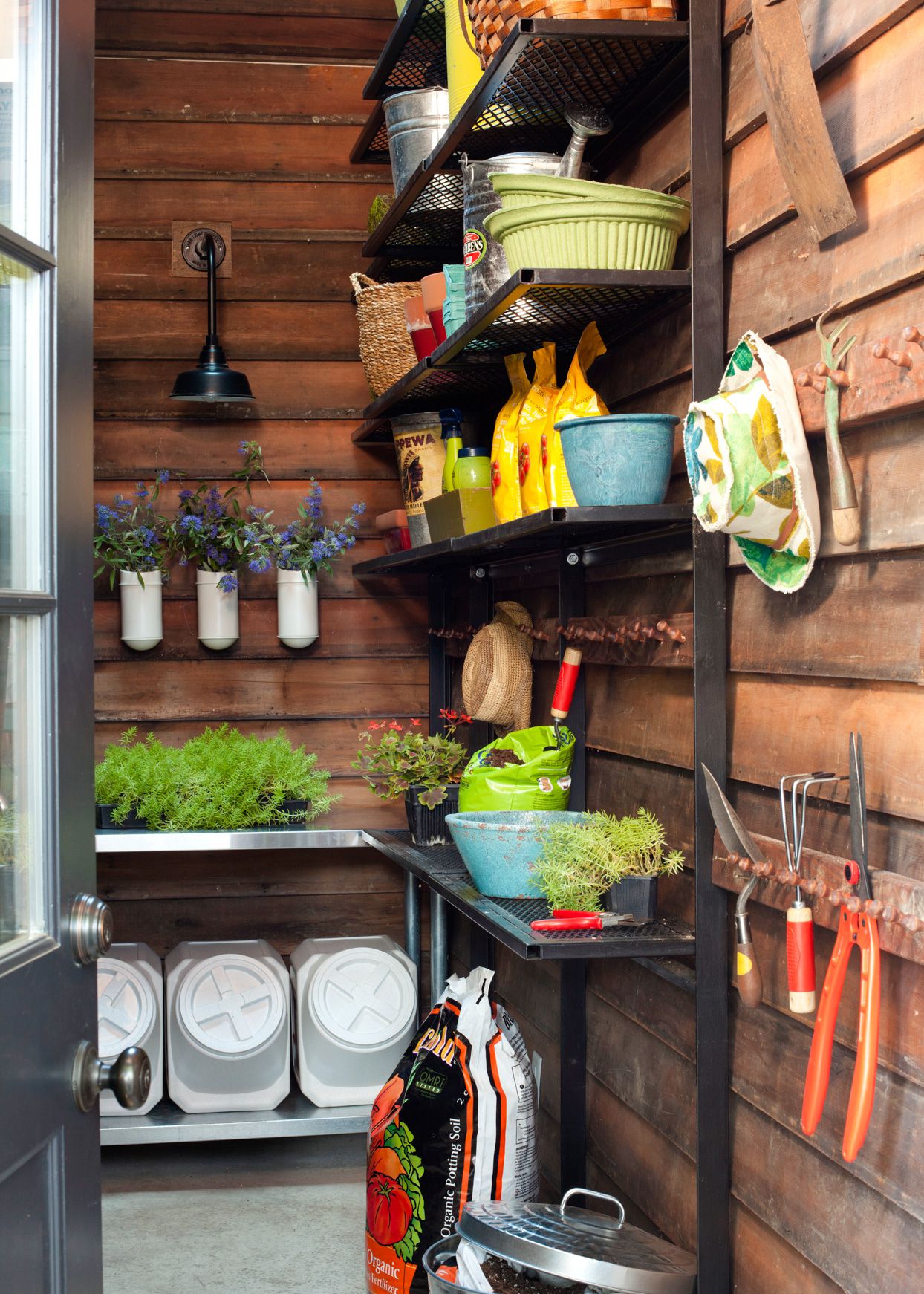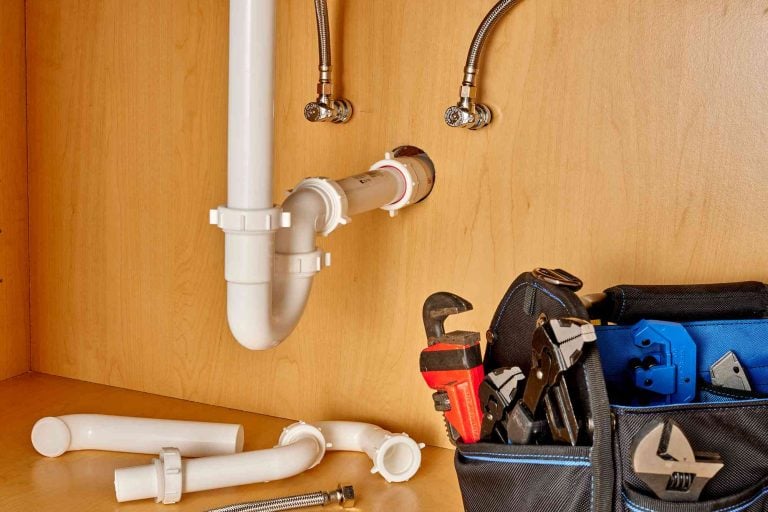The Ultimate Guide to Organizing Your Sheds Tools

Table of Contents
Start by listing all your tools and noting their condition and how often you use them. Next, categorize and group tools by function, keeping frequently used items easily accessible.
Opt for storage solutions like pegboards for hand tools, sturdy shelves for bulkier items, and magnetic strips for metal tools. Implement an organization system with labeled shelves and bins, and clear stackable bins for rarely used tools.
Maintain your shed with regular cleaning and tool inspections. Smart sensors can help monitor conditions to keep tools in top shape. Ready to revolutionize your shed’s organization for peak efficiency?
Assess Your Tools
 Begin by taking a thorough inventory of all your shed tools to understand what you have. Start by listing every tool, from the smallest screwdriver to the largest power tool. Note their condition and frequency of use.
Begin by taking a thorough inventory of all your shed tools to understand what you have. Start by listing every tool, from the smallest screwdriver to the largest power tool. Note their condition and frequency of use.
This step is crucial for planning your custom sheds with mezzanine for storage. It allows you to visualize how to maximize vertical space effectively.
Next, measure your tools and assess their storage needs. For instance, longer tools might require wall-mounted racks, while smaller items could fit into bins or drawers.
Consider the benefits of a mezzanine for rarely used tools, freeing up ground-level space for easy access to frequently used items.
Categorize and Group Items
Once you’ve assessed your tools, it’s essential to categorize and group them based on their type and frequency of use. Start by dividing tools into broad categories, such as gardening, carpentry, and automotive.
Then, within each category, group items by function—like hand tools, power tools, and accessories. Prioritize frequently used items by placing them at the forefront, ensuring they’re easily accessible.
For rarely used tools, consider grouping them together in less prominent areas. This systematic approach not only optimizes space but also streamlines your workflow.
Choose Storage Solutions
To effectively organize your shed, select storage solutions that match the size and type of your tools. Opt for versatile pegboards to hang hand tools, ensuring they’re easily accessible.
For bulkier items, consider sturdy shelving units that can handle heavy loads without sagging. Magnetic strips are excellent for keeping metal tools like wrenches and screwdrivers in order.
Transparent bins are perfect for small parts, allowing you to see contents at a glance.
Innovative wall-mounted racks can store long-handled tools vertically, saving floor space. For power tools, invest in modular storage cabinets with lockable drawers. Utilize ceiling space with overhead racks for seasonal items.
Always aim for solutions that maximize space efficiency while keeping tools within arm’s reach for quick access.
Implement Organization Systems
 Start by categorizing your tools into groups based on their function and frequency of use. For example, group gardening tools, power tools, and hand tools separately.
Start by categorizing your tools into groups based on their function and frequency of use. For example, group gardening tools, power tools, and hand tools separately.
Next, consider implementing pegboards for easy access to frequently used items. Labeling shelves and bins will also make finding and returning tools a breeze.
Drawer organizers can be game-changers for smaller items like screws and nails. For rarely used tools, use clear, stackable bins to save space while keeping them visible.
Magnetic strips are perfect for metal tools, providing both storage and display. Finally, make use of vertical space with wall-mounted racks.
Maintain Your Shed
 Regularly maintaining your shed ensures that it remains clean, organized, and functional for all your storage needs. Start by scheduling a monthly sweep and dusting session. This prevents debris buildup.
Regularly maintaining your shed ensures that it remains clean, organized, and functional for all your storage needs. Start by scheduling a monthly sweep and dusting session. This prevents debris buildup.
Inspect tools and equipment for wear and tear, addressing any issues promptly to extend their lifespan. Keep a checklist of seasonal tasks, like lubricating hinges and checking for pests.
Innovative solutions like smart sensors can alert you to changes in humidity or temperature, helping to protect sensitive items. Utilize modular storage that can be easily reconfigured as your needs change.
Conclusion
In conclusion, by assessing your tools, categorizing and grouping items, choosing storage solutions, implementing organization systems, and maintaining your shed, you’ll transform chaos into order.
You’ll save time, reduce frustration, and create a space that’s functional and efficient.
Remember, an organized shed isn’t just about the present; it’s about future ease.
Keep it tidy, keep it systematic, and keep it stress-free.
Your well-organized shed will be a testament to your effort and planning.






